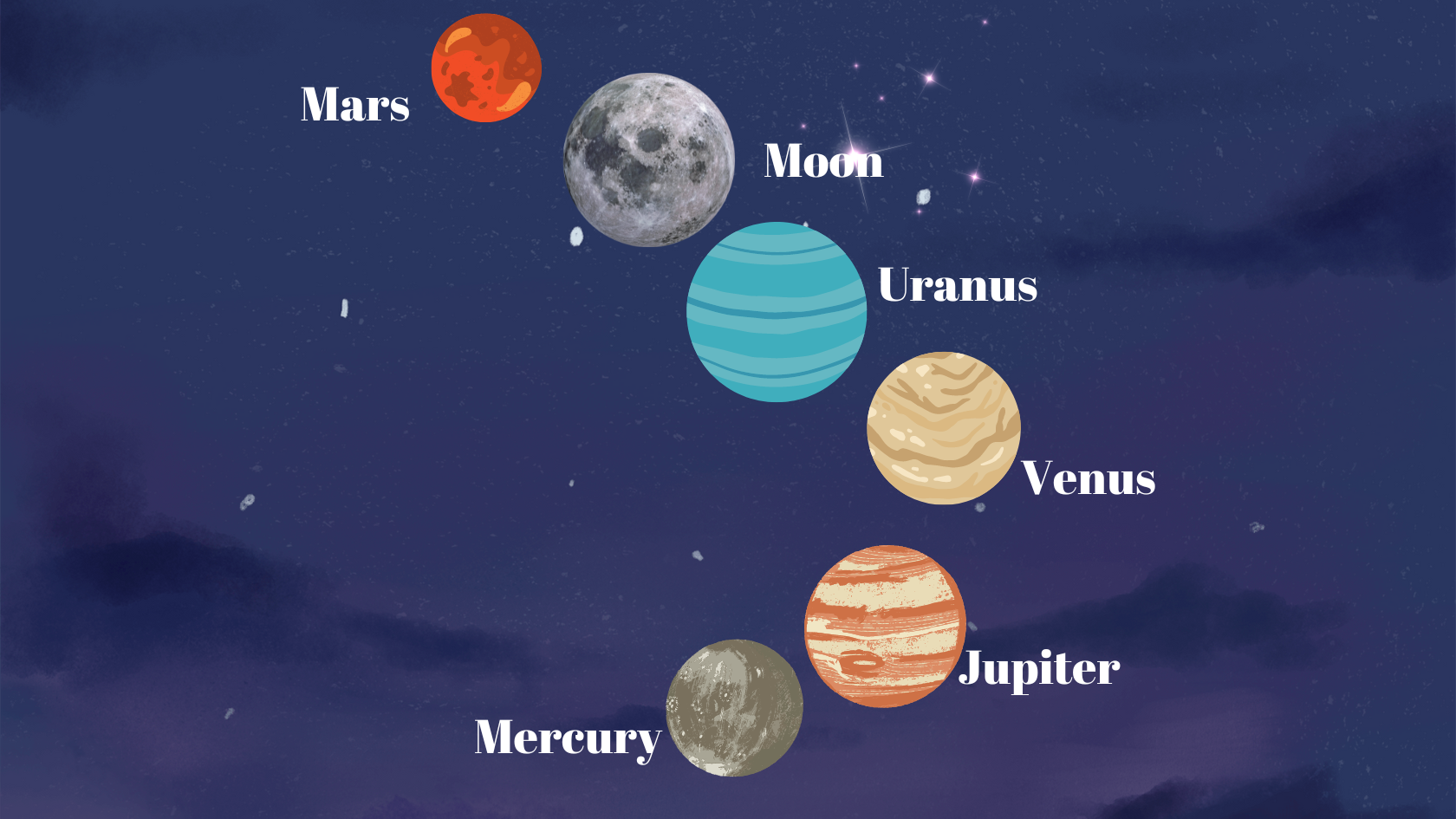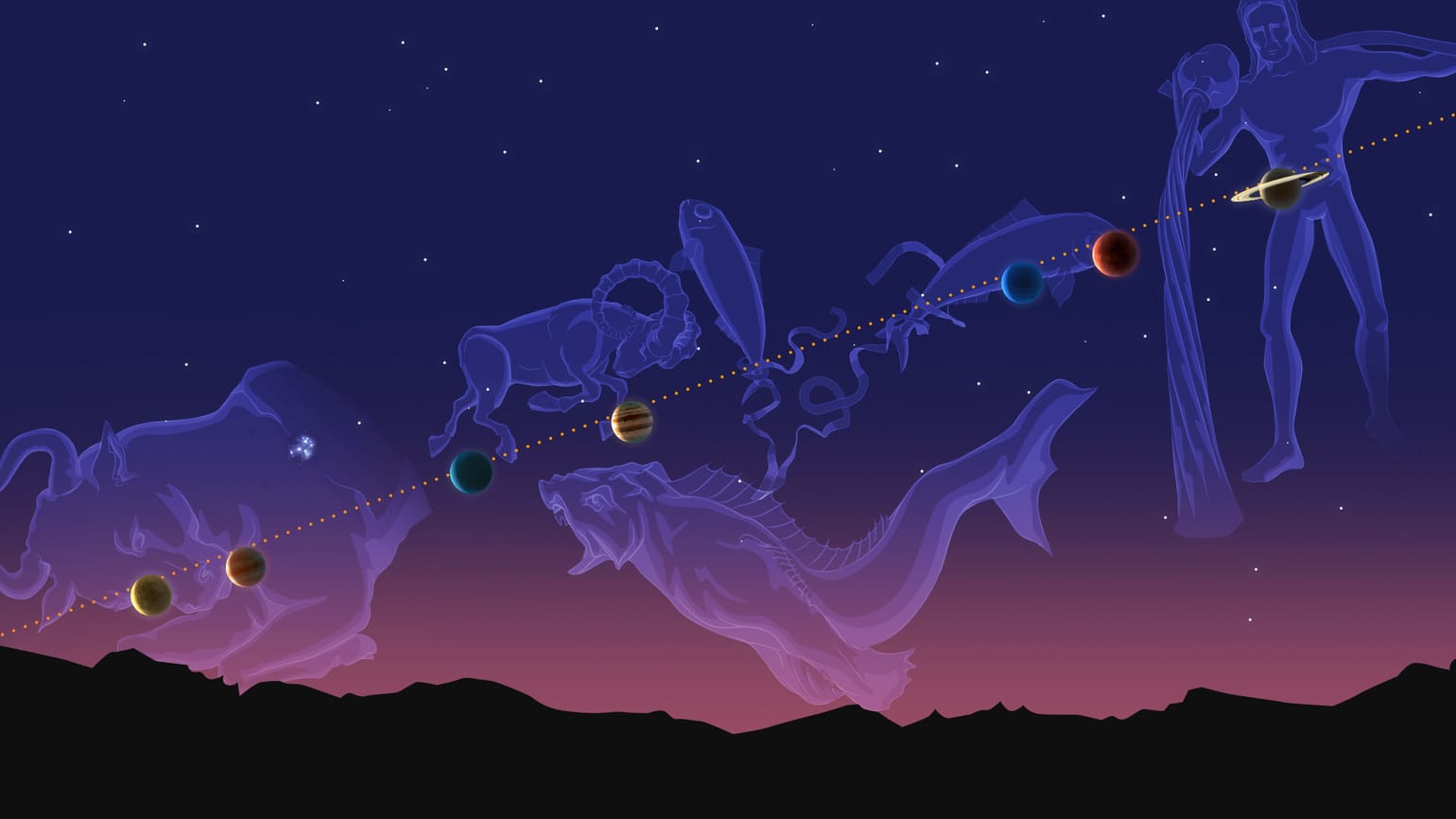Your Guide To The Incredible Planetary Alignment 2025: When And Where To Watch
Get ready for a truly spectacular celestial show coming our way in 2025. It's almost time for what many call a "planet parade," a cosmic event where several planets appear to line up in our night sky. This rare treat offers skywatchers a unique chance to witness multiple worlds at once, a sight that doesn't happen every year, so it's a very special occasion for anyone who enjoys looking up at the stars.
This amazing phenomenon, known as a planetary alignment, actually involves a group of planets appearing close together from our viewpoint here on Earth. Sometimes it's three planets, other times it can be as many as eight, all seemingly gathered in one part of the sky. In 2025, we're in for a particularly special treat, as a remarkable alignment will let us see six planets together during one specific event, and even seven during another, which is pretty exciting.
These gatherings are quite exciting for those who love astronomy, and honestly, even for casual observers. We're talking about opportunities to spot distant worlds like Mercury, Jupiter, Venus, Uranus, Neptune, and Saturn, perhaps even Mars, all at once. There are specific dates and times you'll want to mark down, and different ways to catch the best views, depending on where you are, you know.
Table of Contents
- What is a Planet Parade?
- The August 2025 Celestial Show
- The February 2025 Seven-Planet Spectacle
- Regional Viewing Tips
- Why This Matters to Scientists
- Expert Insights
- Frequently Asked Questions
- Get Ready to Watch
What is a Planet Parade?
A planet parade, as it's often called, is a cosmic happening where several planets appear to line up in the sky from our perspective on Earth. It's not that they're truly in a straight line in space, but rather that their positions relative to Earth make them seem to cluster together. This phenomenon can involve anywhere from three to eight planets, so it's quite a varied event.
These events are truly special because they offer a unique chance to see multiple worlds at the same time. It's almost like a cosmic gathering, where our neighboring planets seem to put on a show just for us. The way they move in their orbits means these alignments are not super common, which makes the 2025 events particularly noteworthy, you know.
For 2025, skywatchers are going to get the chance to see a special planetary alignment. This particular event will let us see six planets all together at one point, which is rather exciting. Then, there's another instance where seven planets will be visible, making it an even rarer sight, so prepare yourself for that.
The August 2025 Celestial Show
August 2025 is shaping up to be a prime time for planet viewing, with a large planetary alignment expected around August 10th. This will be a morning event, so you'll want to set your alarms early to catch the best views. It's a very specific window, about an hour before the sun begins to rise, that offers the best visibility, basically.
Six Planets in the Morning
During this August alignment, six planets will be visible in the morning sky. These include Mercury, Jupiter, Venus, Uranus, Neptune, and Saturn. Imagine seeing all these worlds in one go; it's quite a sight to behold. Jupiter and Saturn are often seen, but having Mercury and Venus join them is less common, since they orbit closer to the sun, you see.
One of the most exciting days for this August 2025 planet parade will be August 18th. On this particular day, the alignment will be especially prominent, offering perhaps the best viewing opportunities. So, if you're planning to watch, August 10th and August 18th are key dates to remember, really.
Visibility Notes
Of the six planets expected to align in August 2025, four will be visible without needing any special equipment. This means you can just step outside and look up to catch a glimpse of them, which is pretty convenient. However, two of the planets, Uranus and Neptune, will require the aid of a telescope to be seen clearly, you know.
So, while a good portion of the alignment will be accessible to everyone, those with a telescope will get to experience the full six-planet show. It's a great reason to dust off any existing equipment or perhaps even consider borrowing some if you're keen to see all of them. Your best chances of seeing each planet will be at twilight, when the sky reaches its ideal brightness, you see.
The February 2025 Seven-Planet Spectacle
Beyond August, another truly remarkable event is set for February 28, 2025. On this evening, stargazers will be treated to an incredibly rare alignment of seven planets. This is a significant event, as it's not every day you get to see so many worlds together in the night sky, so it's a very special opportunity.
A Rare Gathering
Seven planets in our solar system — Mercury, Venus, Mars, Jupiter, Saturn, Uranus, and Neptune — will line up in the night sky on that Friday, February 28th. This is an alignment that doesn't happen often at all. It's a moment when Mercury joins six other planets that are already visible, making it a complete set of the other planets in our solar system, essentially.
On the evening of February 28, 2025, all seven of these planets will appear in the night sky at the same time. You'll be able to spot Saturn, Mercury, Neptune, and Venus, among others. Uranus and Neptune will also be part of this grand display, adding to the rarity of the event, basically. It's a truly unique cosmic gathering.
Regional Viewing Tips
Catching these planetary alignments can depend a bit on your location. Different parts of the world might have slightly different viewing conditions or optimal times. However, the general guidance for these events remains fairly consistent, which is helpful, you know.
California Viewing
For stargazers in California, January 25, 2025, will offer a rare treat in the night sky. While the main August and February alignments are key, this earlier date suggests another unique viewing opportunity specific to the region. It's a good idea to check local astronomy clubs or guides for the most precise viewing times and directions for your area in California, actually.
Florida Viewing
If you're in Florida, you'll be able to see the planetary alignment just after the sun sets on a Friday. This indicates an evening viewing opportunity, different from the morning August alignment. Your best chances of seeing each planet will be at twilight, when the sky reaches its optimal viewing state, you know. Make sure to find a spot with a clear view of the horizon.
Texas Viewing
For those in Texas, an alignment of seven planets will be visible in Friday's evening sky. This likely refers to the February 28th event. Knowing when and where to view this celestial phenomenon from Texas will be key. Local astronomy resources or sky guides can provide specific directions and times to maximize your chances of seeing all seven planets, basically.
Why This Matters to Scientists
Planetary alignments, or planet parades as they're sometimes called, are more than just pretty sights for scientists. These events offer valuable opportunities for study. They help researchers understand the orbits of planets better and how they interact gravitationally over long periods, which is pretty important.
The closer orbits of Venus and Mercury, for example, make them trickier to observe regularly because they're often lost in the sun's glare. During an alignment, when they appear further from the sun's brightness, it provides a unique window for observation. This allows scientists to gather data that might be harder to collect at other times, you know.
The question of whether we will ever see all the planets lined up together on one side of the sun is a fascinating one that scientists often consider. While a perfect, straight line is astronomically improbable, these "parades" are the closest we get. They offer a real-world demonstration of orbital mechanics, which is a very useful thing for scientific study, basically.
Expert Insights
To help us make the most of these incredible events, expert astronomer Dean Regas has provided a guide. This guide, which covers the "summer edition" of the planet parade 2025, includes recommended dates, specific directions for viewing, and answers to frequently asked questions. His insights are very valuable for anyone planning to watch, you know.
Having guidance from someone like Dean Regas is incredibly helpful for skywatchers. It means we don't have to guess when or where to look. His tips can make the difference between missing a fleeting glimpse and experiencing the full wonder of these alignments. So, it's definitely worth checking out his advice for the best viewing experience, essentially.
Frequently Asked Questions
People often have many questions about planetary alignments, especially when such rare events are approaching. Here are some common inquiries that come up, you know.
When is the 7 planet alignment?
The alignment of seven planets will be visible on Friday, February 28, 2025. This incredibly rare planetary parade will feature Mercury, Venus, Mars, Jupiter, Saturn, Uranus, and Neptune all appearing in the night sky together. It's a truly unique opportunity to see so many worlds at once, basically.
What planets will be visible in the August 2025 alignment?
In August 2025, specifically around August 10th and 18th, six planets will be visible in the morning sky. These include Mercury, Jupiter, Venus, Uranus, Neptune, and Saturn. Four of these will be visible without a telescope, while Uranus and Neptune will require one for clear viewing, so keep that in mind.
Where can I find specific viewing times for my location?
Your best bet for finding specific viewing times and directions for your area is to consult local astronomy guides or resources. Expert astronomer Dean Regas's guide for the "summer edition" of the planet parade 2025 also offers recommended dates and directions. Websites like NASA's official site or local planetarium sites often provide detailed information, you know. Learn more about planetary events on our site, and link to this page for more astronomy tips.
Get Ready to Watch
As 2025 approaches, the excitement for these planetary alignments is building. Both the August and February events promise incredible views of our solar system's planets. Whether you're an experienced stargazer or just curious about the cosmos, these are moments you won't want to miss. So, plan ahead, find a good viewing spot, and prepare to witness some truly remarkable celestial shows. It's a very special time for skywatching, basically.
- Lebron Cant Believe This Is My Life
- Who Is Nia Jax Dating Now Past Relationships
- Jane Erin Carrey Mother

Planetary Alignment 2025 June 3 2025 - Sami Nura

Planetary Alignment 2025 June 3 2025 - Omar Zayd

Planetary Alignment 2025 June 3 2025 - Omar Zayd